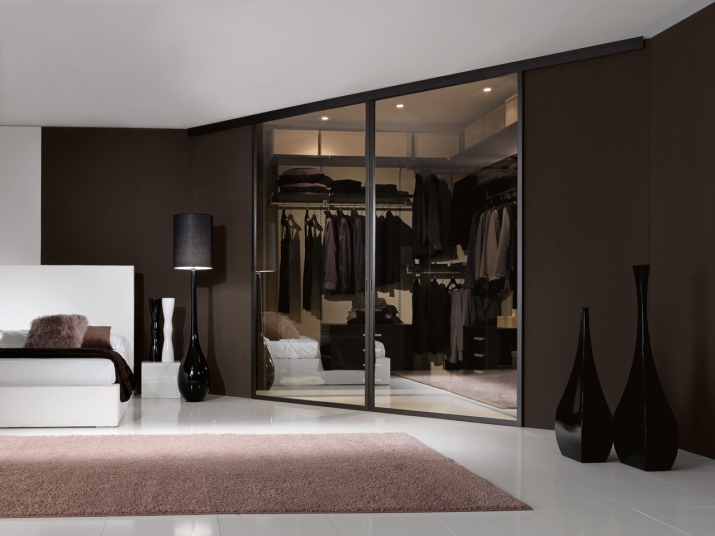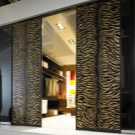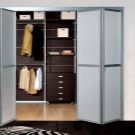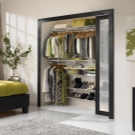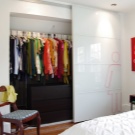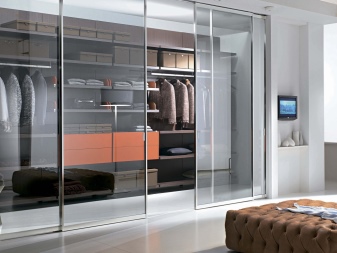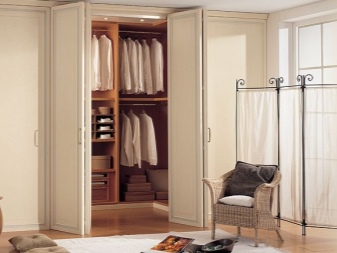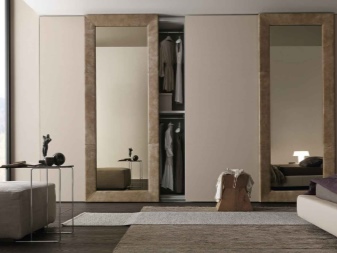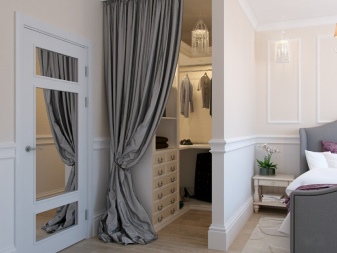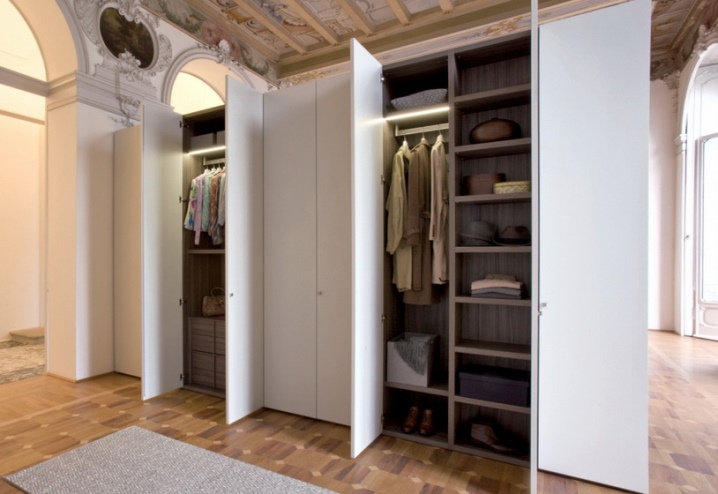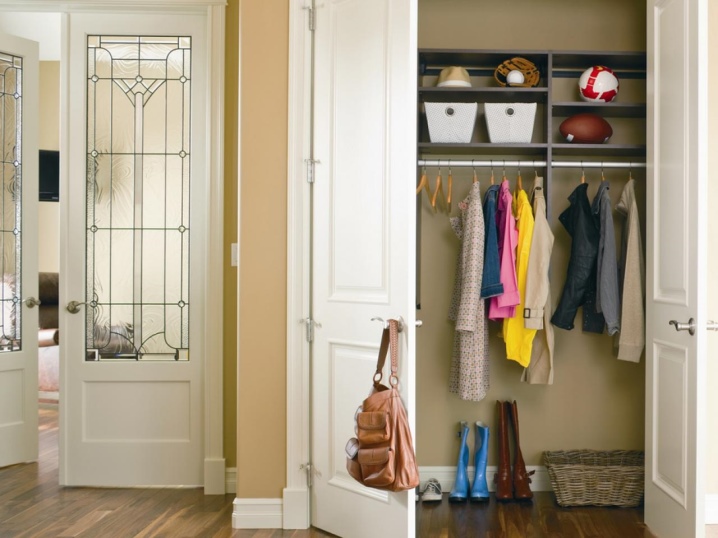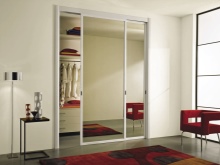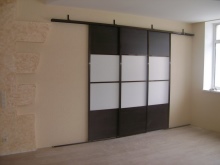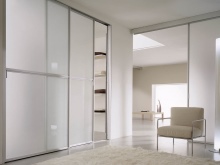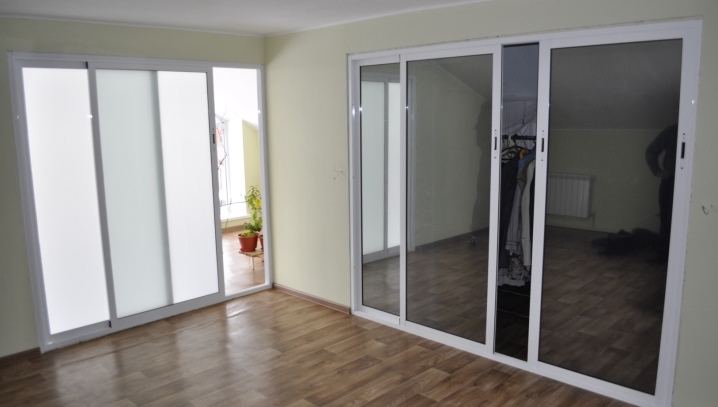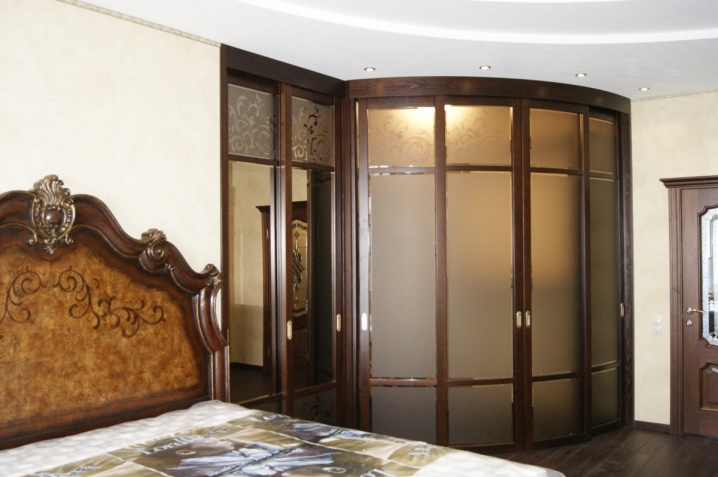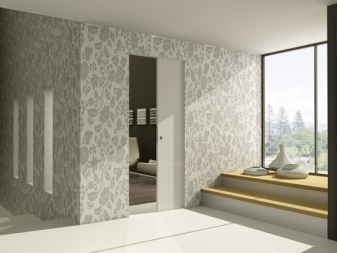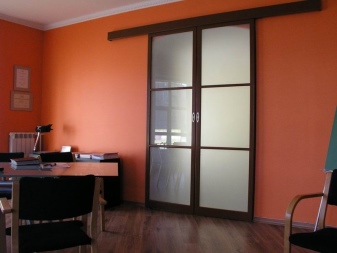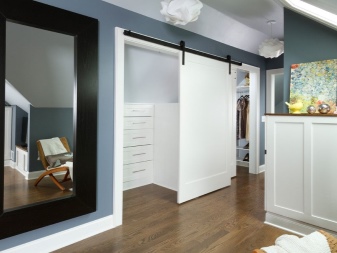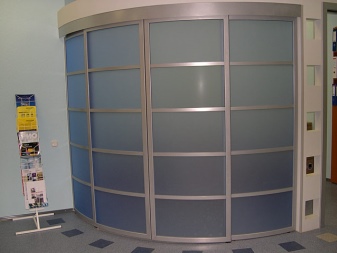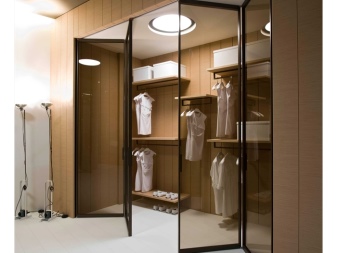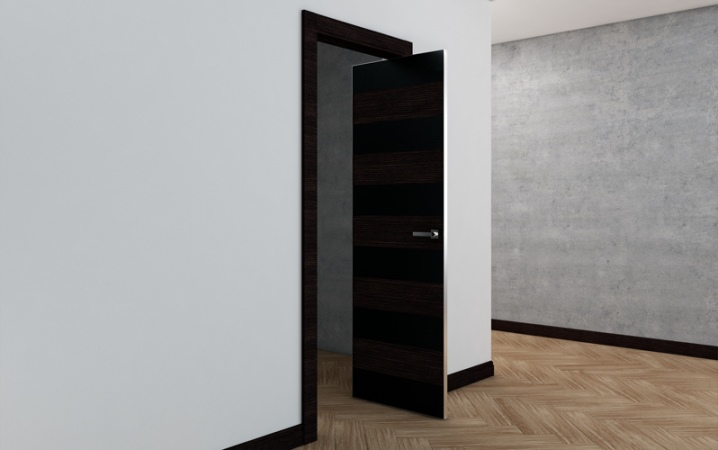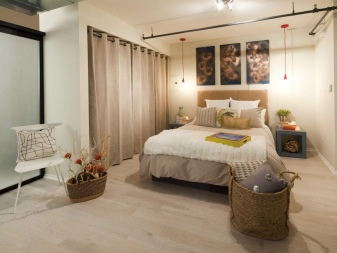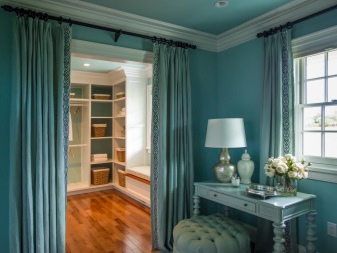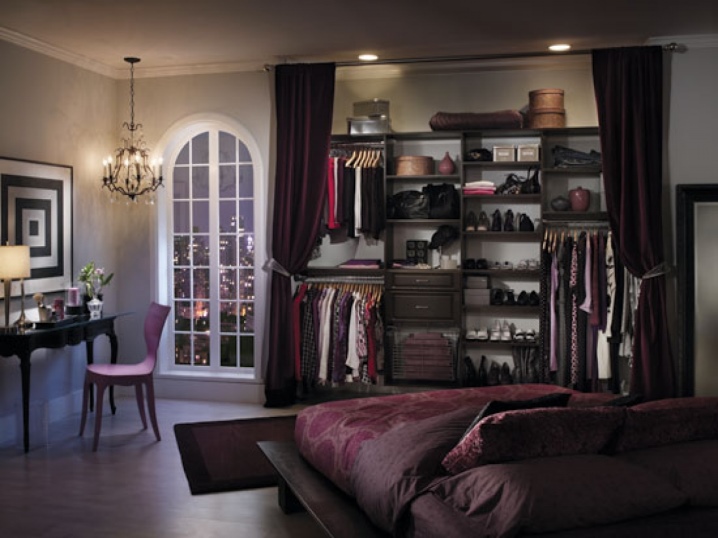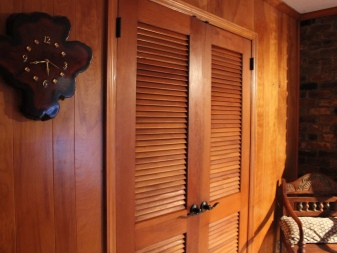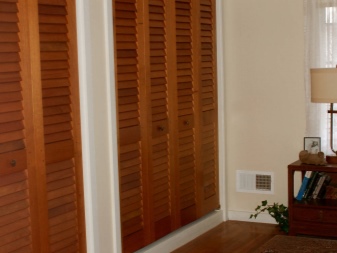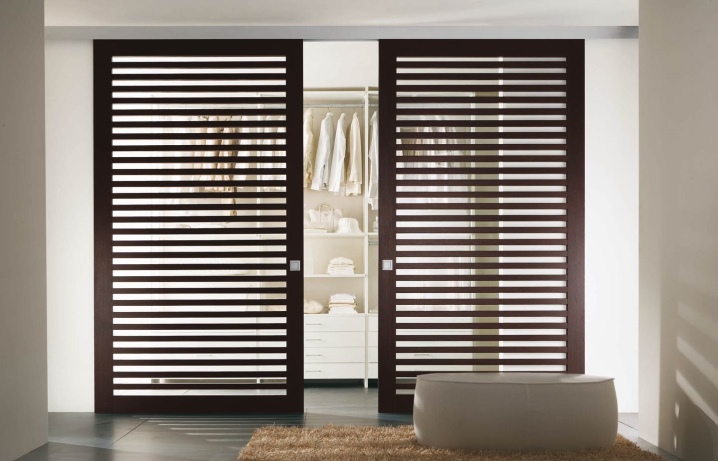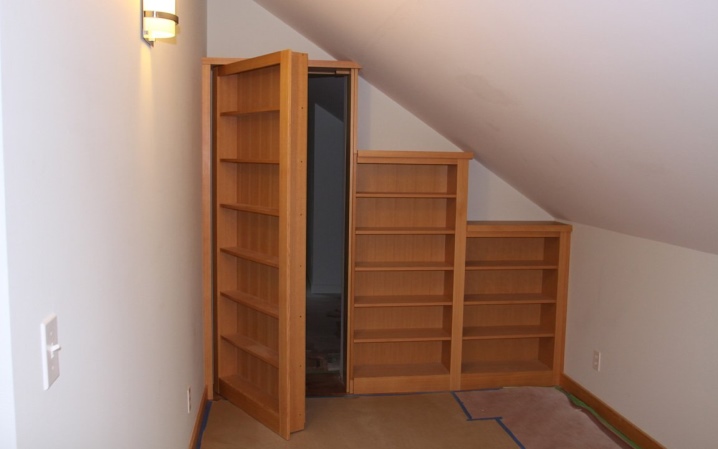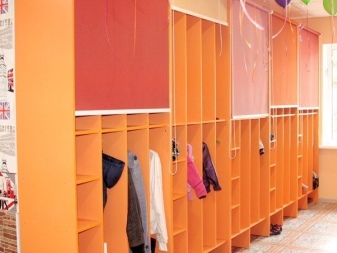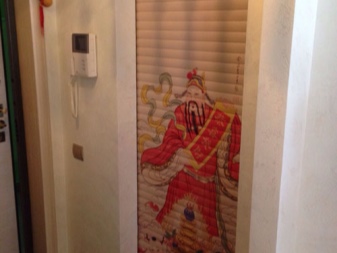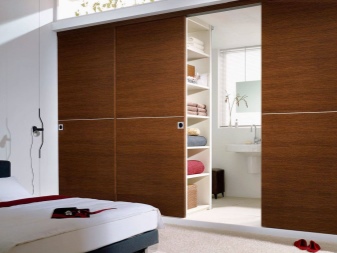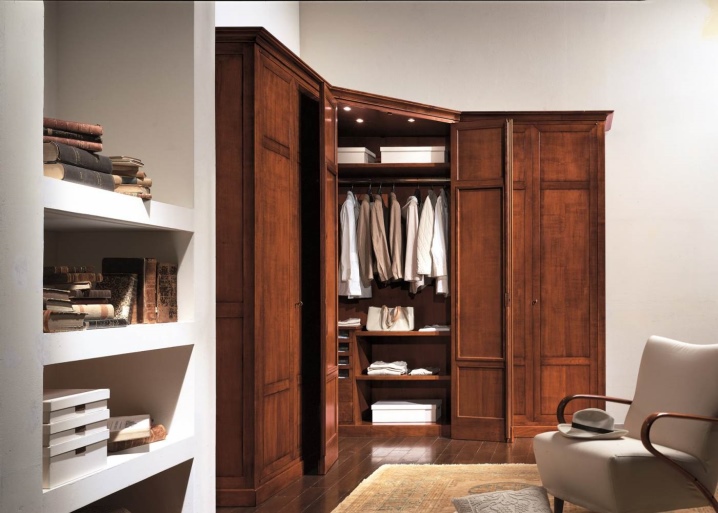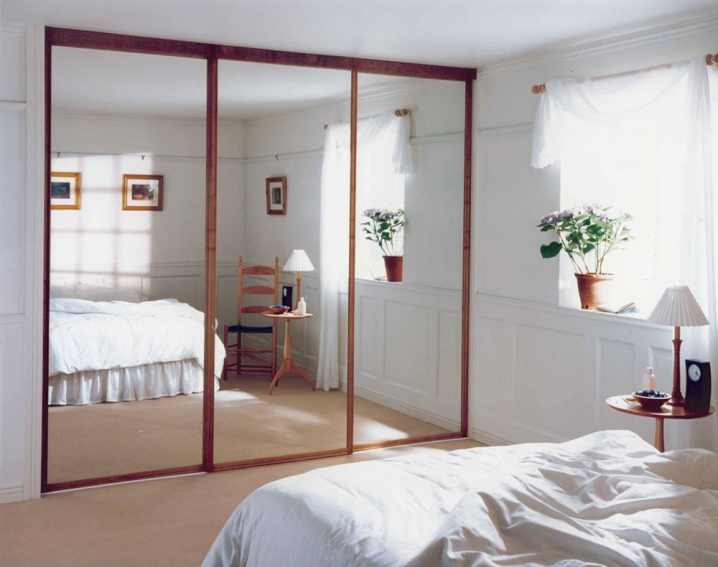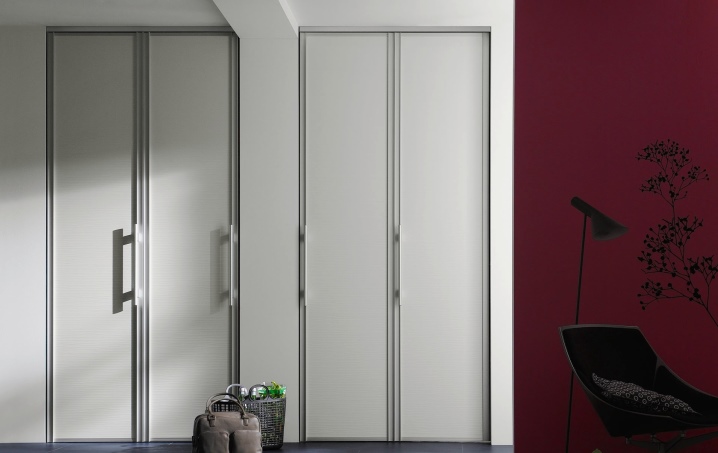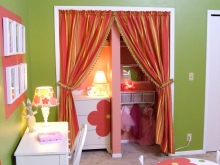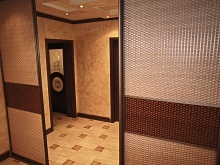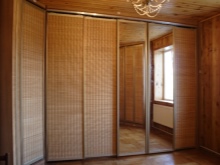Doors to the dressing room
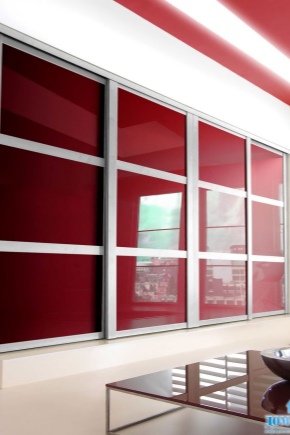
The doors to the dressing room are the front of a convenient and practical storage space. And while the dressing room itself performs the function of storage, the doors not only hide its contents from prying eyes and protect from dust, but also play the role of a decorative element in the interior.
Types of systems and mechanisms
The cloakroom can be a separate room or a built-in construction, insulated by doors. At the same time there are several types of doors: swing, sliding, sliders and door-accordion.
These types are considered traditional, but there are alternatives, such as curtains or plastic curtains.
Swing
Cabinet doors, walls or chiffonier, opening on themselves, belong to the swing. The same type of door can be found in the dressing room, if its dimensions are small. If the width of the facade exceeds several meters, it is better to replace them with sliding or accordion, since the total weight of the structure will be too heavy. This, in turn, will affect the service life of the door hinges.
As a rule, under heavy loads, they wear several times faster, and under normal loads, swing structures are fairly reliable and durable. Their lifespan can be several decades.
In addition to a long service life, they are distinguished by almost complete noiselessness. Sometimes the loops start to creak, but this problem is easily solved by applying a lubricant.
Choosing doors of this type, you should consider one important thing - they require free space in the room to open. This often becomes a problem for rooms of small footage or non-standard planning.
Sliding
Practice proves that sliding or sliding structures are more effective in exploitation than swing ones.
The principle of operation of the sliding mechanism is similar to the door mechanism of the wardrobe. It consists of three rollers with soft rubber tires, which are mounted on ball bearings, and a spring roller. This makes the sash stroke smooth and silent. It functions on the principle of guide rails, i.e., the flaps move due to special rollers inside the steel or aluminum profile.
Steel profile weighs more and less aesthetically pleasing, but at the same time, many manufacturers prefer it because of a number of advantages:
- He is stronger, and with a thickness of 5 mm allows to produce wide door frames, which generally improves the reliability and rigidity of the structure.
- Steel profile has no weight restrictions.so it is possible to use both heavy glass and natural wood for the manufacture of doors.
- Its cost is significantly lower than aluminum.
Aluminum profile is lighter, more beautiful and reliable. Its strength is ensured by the presence of so-called "stiffeners", but they are not enough to hold a large weight. Maximum permissible load - 70-80kg.
Ways to open sliding doors are variable: canvases canmove along the walls of the dressing room, they can be pulled out by almost a quarter of a meter, and then spread out to the sides, docked at the corners in the corner walk-in closets.
Types of sliding mechanisms:
- Penalty. Their peculiarity is that the door leafs, when opening, fit into special grooves inside the wall. This is convenient in order to save space and with the equipment under the dressing room of small niches.
- Coupe or movable. The movable parts of the facade are fixed on guides along which they can be moved in any direction. During the opening and closing of the door, the canvas "run into" each other. The compartment door has one drawback - it is completely impossible to open the dressing room. One of the sections will always be shielded by doors.
- Techno. This is a kind of mechanism that implies only the upper mounting in the absence of the lower guides.
- Radius. Radial or radial walls of the dressing room are elegant and modern models representing a worthy alternative to direct forms. They are distinguished by a smoothly curved facade, due to which the doors look interesting and unusual. But in the manufacture of radius mechanisms complicated designtherefore the cost increases.
Folding
Types of folding mechanisms:
- Book. The name speaks for itself. Each flap is not only shifted to the side, but also folds in half on the principle of dressing screens, common in the east. Therefore, the second name of these doors - folding.
- Harmonic. The principle of operation is the same as that of the door-book, only the panels are thinner and narrower, and are composed by an accordion 3, 4 or more times.
Swivel
- Roto. Unusual view of the door, which is located in the center of the swivel mechanism. That is, they can be opened inward and outward, left and right. These doors require a little more space inside the dressing room and in front of its facade, because when opened, they resemble narrow swing doors.
Alternative options instead of the door
Curtains
Preferring this option, it is important to weigh the pros and cons.
The positive aspects of using textile analogues are:
- the ability to change the zoning of the room. Just throwing the curtain, it is easy to increase the area of the room by a few square meters;
- design variability is another advantage of textile curtains, because changing them is much easier than the doors;
- decorative accent. The use of textiles allows you to beat any room design in an original and unusual way;
- extra comfort. Fabric fabric softens the strict lines of the situation, making it more comfortable and airy.
Disadvantages:
- regular hygiene procedures. Even the darkest and most non-staining fabric requires frequent washing, as dust and microbes accumulate on it. This, in turn, leads to the fact that the material quickly loses its presentable appearance;
- wear resistance of textiles much less than wood, plastic, and other materials;
- minimal functionality. In the dressing room you need a mirror, and most often it is located on the door. Curtains exclude this possibility;
- the curtains do not protect the dressing room from visits of pets and small children.
Jalousie
Louver doors are a good substitute for massive linens. They look more interesting and visually “unload” the space of even and dense surfaces in the room. With its aesthetic characteristics, louvered doors in the dressing room hide its contents from prying eyes and provide ventilation inside the sections. Dust and smell of "stale" things will not be guaranteed.
Doors of this type can be represented in all types of swing and sliding mechanisms, except for radius. Panels can be selected both horizontal and vertical. In the production of structures used all kinds of materials for door panels: glass, wood, MDF panels.
Slatted doors
Got their name due to the design features: the door leaf consists of narrow oblong rails arranged horizontally. Reiki attached to the whole frame. The tilt angle can be varied as desired, this will change the width of the gap between them.
Advantages of slatted doors:
- The ability to choose any type of mechanism: swing, folding, sliding.
- Good air circulation for proper storage.
- Decoration of modern interior.
- Visual lightness and airiness of the structure.
- Maximum wear resistance.
The disadvantages include the need to often wipe the dust deposited in the space between the slats. Also on the slatted and louvered doors there is no mirror.
Secret
Hidden doors are a construction that is installed flush with the wall on secret hinges and decorated under the surroundingspace. Most often - under the color of the walls or wallpaper design, but you can disguise and a mirror. Handles on the secret doors are also as inconspicuous as possible.
Invisible doors in the dressing room can be of two types: swing and penny. At the same time penny will be allocated more, since the sliding mechanism is more difficult to hide.
The choice of secret doors will provide harmony in space, visually make it more free and spacious.
Rolled
The design of the rolling doors consists of a special shaft on which the canvas is wound, a chain or spring mechanism, and the canvas itself.
For a dressing room, a roll system with guides and a bar to weight the canvas is best suited. This door opens and closes up and down. Height can be adjusted.
To protect the contents of the dressing room is often used fabric "blackout" that does not transmit light.
Materials
- The most affordable and popular in the production of door leaf are made of laminated chipboard and MDF. They are distinguished by simplicity, quality, durability, but not very variable in design.
- Much more opportunities to process and translate original ideas are provided by working with natural wood.. This material will be much more expensive, the total weight of the structure will be many times more, but at the same time, it is the most environmentally friendly, aesthetic and durable. Using wood, you can make doors of any configuration, from solid web to blinds, and apply an interesting design.
- Plexiglas is a popular material.. With its considerable weight glass surfaces add lightness and transparency to the room, making it less loaded and deaf. And modern technologies allow using safe types of glass, which does not shatter into fragments if the integrity of the plate is disturbed, but remains inside a strong film.
- Mirror cloths go along with glass.
Mirror - a necessary attribute of a dressing room. It can be used as a whole, and fragmentary. For example, as an insert into the door-book or one of the compartment doors.
- The budget and multi-functional option is plastic. It is easy to process, takes any form, keeps an excellent appearance for a long time, is durable, protects the contents of the dressing room. Plastic structures are lightweight, so they are successfully combined with an aluminum profile.
- Among the unusual materials worth noting textiles. It can be of different density, different colors and different degrees of naturalness. As the door to the dressing room it is better to use dense heavy fabrics that drape beautifully and protect things from dust.
Bamboo, leather and rattan are used as natural materials in the production of doors.
How to install sliding doors yourself, see more in the video below.
